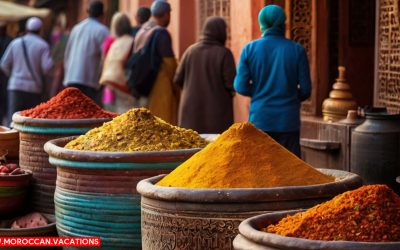Marrakesh’s Vibrant Art Scene
Step into the vibrant art scene of Marrakesh and discover the captivating influence of Islamic art in its contemporary works. As you wander through the city’s galleries, you’ll be immersed in a fusion of tradition and modernity, where traditional Islamic art techniques meet innovative approaches. Geometric designs adorn canvases, calligraphy takes on a modern form, and sculptures pay homage to intricate Islamic patterns. Prepare to be amazed as Marrakesh pushes the boundaries of Islamic art, offering a truly liberating experience for art enthusiasts.
In Marrakesh, you’ll find a vibrant art scene that is influenced by Islamic art. This bustling city is home to a growing community of emerging local artists who are making their mark on the contemporary art scene. These artists draw inspiration from the rich cultural heritage of Morocco, incorporating traditional Islamic motifs and techniques into their work.
One of the defining characteristics of Marrakesh’s art scene is its cross-cultural influences. The city has a long history of being a melting pot of cultures, with influences from the Arab, Berber, and European communities. This diversity is reflected in the art produced here, resulting in a unique fusion of styles and ideas.
The emerging local artists in Marrakesh’s art scene are not bound by traditional conventions. They experiment with different mediums, techniques, and subject matters, pushing the boundaries of what is considered “Islamic art.” This freedom of expression allows them to explore their own identities and challenge societal norms.
The contemporary art scene in Marrakesh is a testament to the city’s vibrant and dynamic culture. It serves as a platform for local artists to showcase their talent, while also connecting with international artists and audiences. This exchange of ideas and influences further enriches the artistic landscape of Marrakesh, making it an exciting hub for creativity and innovation.
Geometric Designs in Contemporary Art
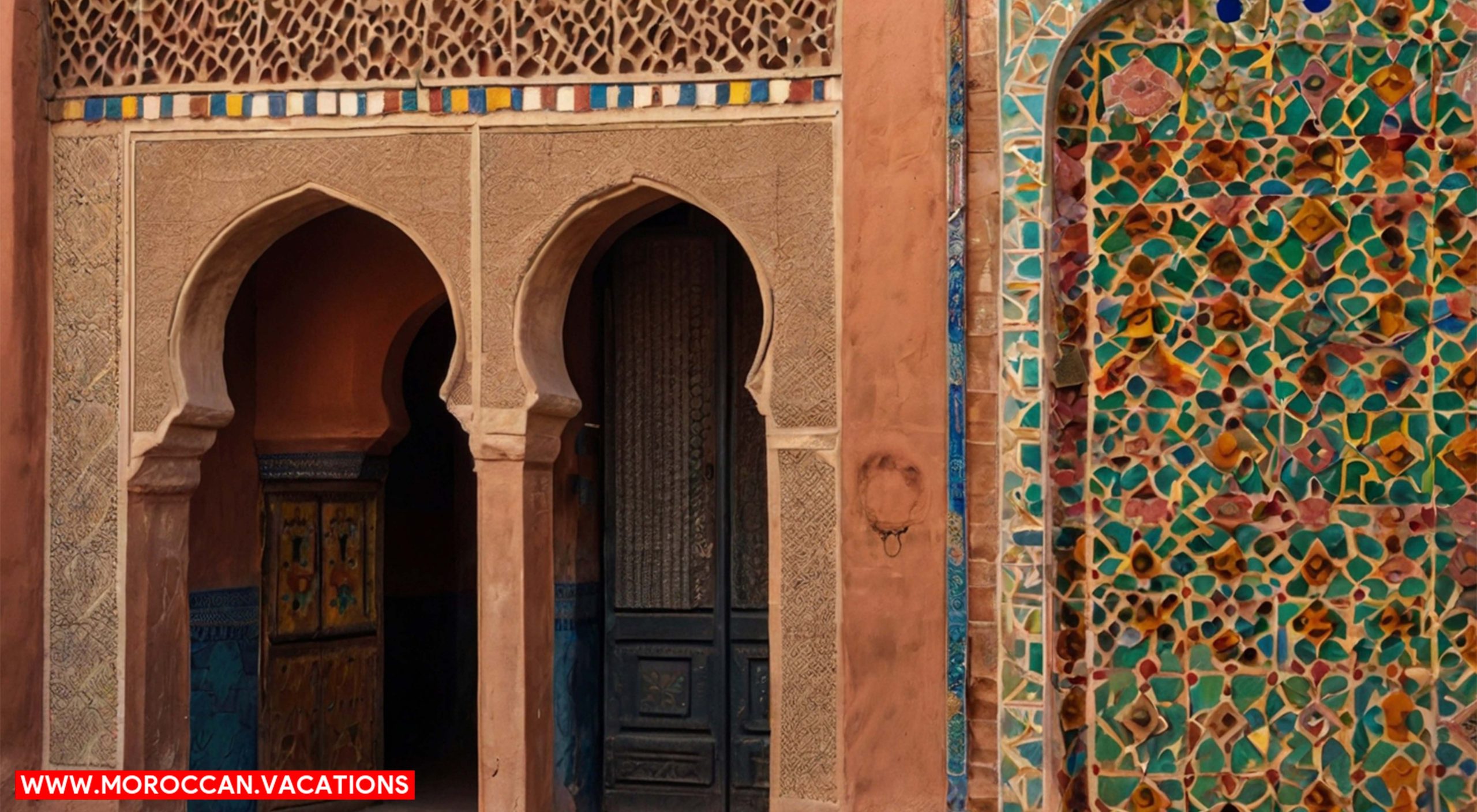

How can contemporary artists in Marrakesh incorporate geometric designs into their artwork? Geometric designs have long been a prominent feature in Islamic art, and their influence can be seen in the architecture, textiles, and pottery of Marrakesh. These intricate and symmetrical patterns hold a great cultural significance, representing the precision and order found in the Islamic faith. In contemporary art, artists in Marrakesh are embracing these geometric designs and incorporating them into their work, creating a fusion of tradition and modernity.
One way artists are incorporating geometric designs is by using them as a foundation for their compositions. They create intricate patterns using lines, shapes, and colors, which not only add visual interest but also convey a sense of harmony and balance. These geometric patterns can be found in various forms, such as paintings, sculptures, and installations, allowing artists to express their creativity while paying homage to the rich artistic heritage of Marrakesh.
Another way artists are incorporating geometric designs is by incorporating them into their choice of materials. They use materials like mosaic tiles, woodwork, and metalwork to create geometric patterns, infusing their artwork with the cultural significance of Islamic art. This blending of traditional techniques and contemporary aesthetics creates a unique visual language that resonates with both local and international audiences.
Calligraphy as a Modern Art Form
Continue exploring the influence of Islamic art in Marrakesh’s contemporary art scene by examining how calligraphy has evolved into a modern art form. Modern calligraphy has become a prominent aspect of contemporary Islamic art, blending tradition with innovation to create captivating works that resonate with freedom-seeking audiences.
- Preservation of Tradition: Despite its modern transformation, calligraphy remains deeply rooted in Islamic tradition. Artists continue to study classical Arabic scripts and adhere to the principles of proportion, rhythm, and balance. By preserving these traditional elements, modern calligraphy pays homage to its historical significance while pushing artistic boundaries.
- Experimentation with Materials and Techniques: In contemporary Islamic art, calligraphy artists have embraced new materials and techniques to express their creativity. Traditional calligraphy was typically done with ink and paper, but modern artists are now incorporating various mediums such as acrylics, spray paint, and even digital platforms. This experimentation allows for greater artistic freedom and enables artists to explore diverse styles and interpretations.
- Expression of Individuality: Modern calligraphy in the context of contemporary Islamic art offers artists a platform to express their individuality and personal perspectives. Through their unique compositions and innovative approaches, artists are able to communicate their thoughts, emotions, and cultural identities. This freedom of expression not only enriches the art form but also fosters a deeper understanding and appreciation for the diversity within Islamic art.
Fusion of Tradition and Modernity
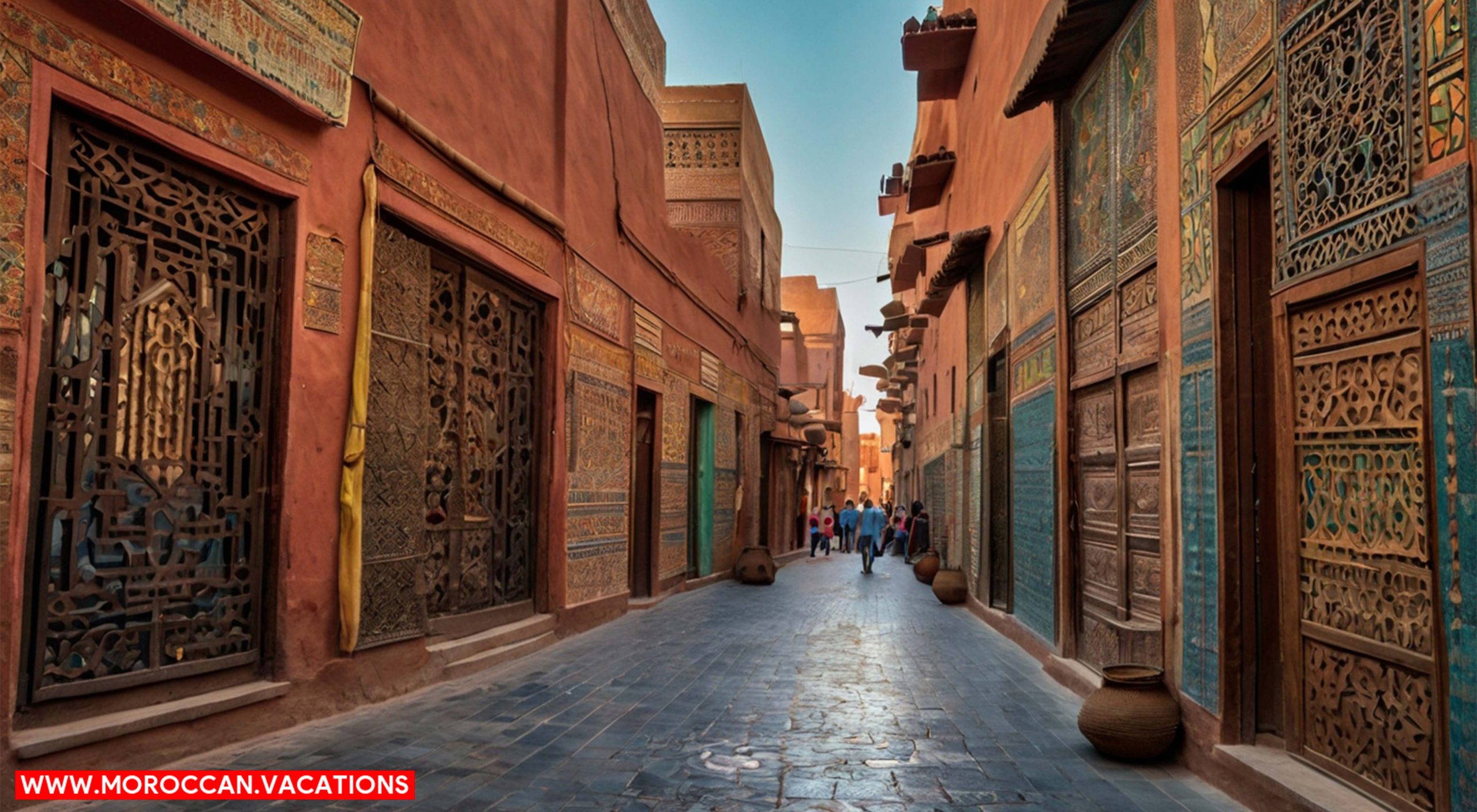

Embrace the fusion of tradition and modernity in Marrakesh’s contemporary art scene, as Islamic artists seamlessly blend historical influences with innovative techniques. This harmonious blend of tradition and innovation is a testament to the enduring power of Islamic art and its ability to adapt and evolve with the times.
In Marrakesh, artists are not simply replicating the traditional forms of Islamic art; they are reinterpreting them in a contemporary context. By incorporating modern materials, techniques, and themes, these artists are able to create works that not only pay homage to their cultural heritage but also speak to the realities of the present.
One of the key challenges in this fusion is the preservation of cultural heritage. Islamic art has a rich history, with centuries of tradition and craftsmanship. It is important for artists to maintain a connection to this heritage while also pushing the boundaries of what is possible in contemporary art. By striking a balance between tradition and innovation, artists in Marrakesh are able to create works that are both rooted in the past and relevant to the present.
The fusion of tradition and modernity in Marrakesh’s contemporary art scene is a testament to the resilience and creativity of Islamic artists. By preserving their cultural heritage while also embracing innovation, these artists are able to create works that are both visually stunning and intellectually stimulating. It is through this fusion that Islamic art continues to thrive and inspire audiences around the world.
Influence of Islamic Patterns in Sculpture
Islamic patterns have a significant influence on sculpture in Marrakesh’s contemporary art scene. The incorporation of these patterns in sculptural works allows artists to create pieces that not only showcase their artistic skills but also pay homage to the rich cultural heritage of Islamic art. Here are two ways in which Islamic patterns are being adapted and integrated into sculpture in Marrakesh:
- Calligraphy in architectural design: Islamic calligraphy has long been revered as a form of art in itself, and its influence can be seen in the architectural design of sculptures in Marrakesh. Artists often incorporate intricate calligraphic designs into the surfaces of their sculptures, adding a layer of depth and meaning to the artwork. The flowing lines and elegant curves of Arabic letters create a harmonious balance with the sculptural form, resulting in visually stunning and culturally significant pieces.
- Adaptation of Islamic patterns in fashion design: In addition to architecture, Islamic patterns have also found their way into the realm of fashion design. Sculptures in Marrakesh often feature elements of Islamic patterns that have been adapted and reimagined to create unique and contemporary fashion pieces. From intricate geometric motifs to delicate floral patterns, these sculptures showcase the versatility and adaptability of Islamic art in the world of fashion.
Exploring Marrakesh’s Art Galleries
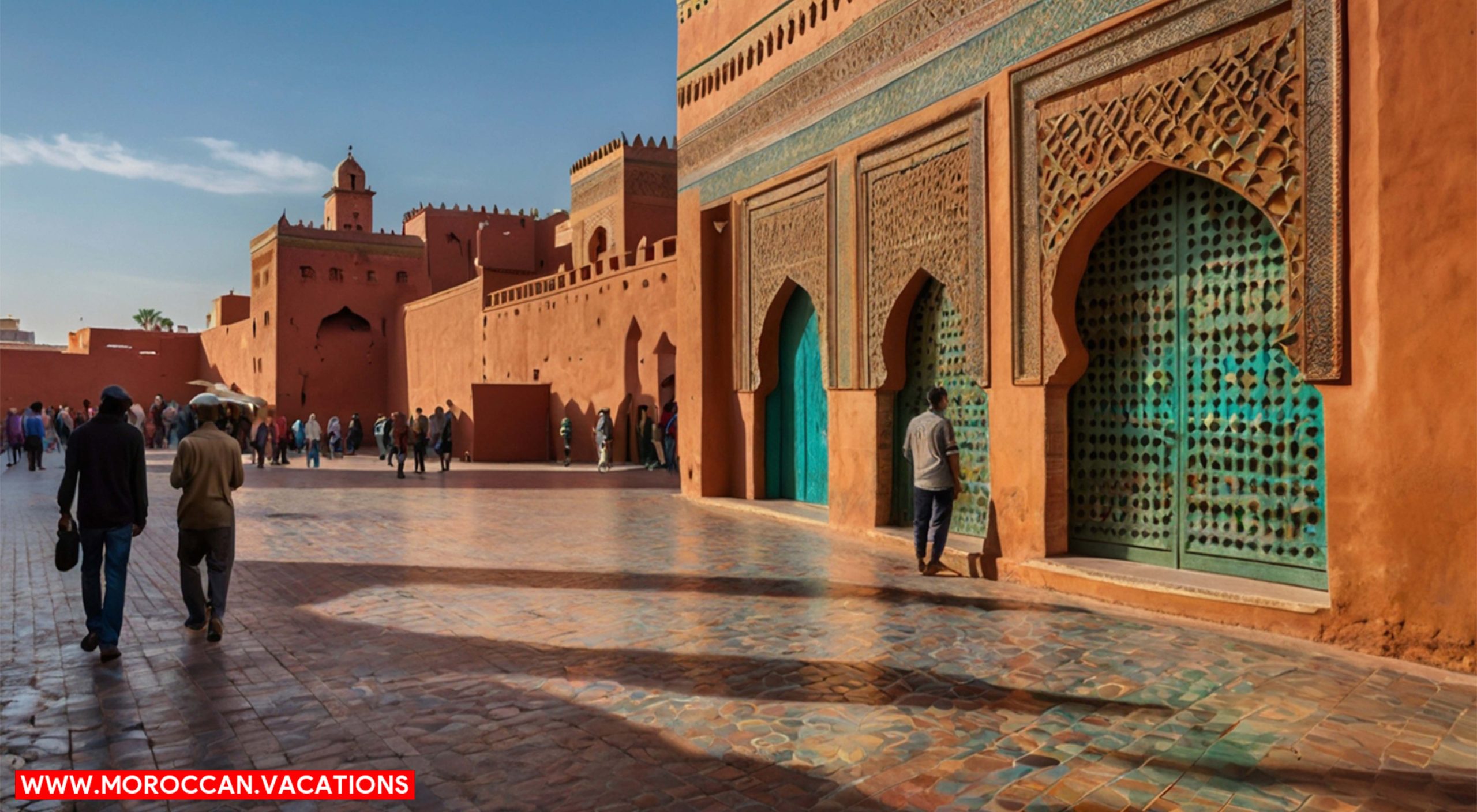

Take a stroll through Marrakesh’s art galleries to immerse yourself in the vibrant contemporary art scene of the city. Marrakesh is home to a diverse range of art galleries that showcase a variety of artistic expressions, including new media art and contemporary photography. These galleries have become important platforms for local and international artists to exhibit their work and engage with the community.
One of the emerging trends in Marrakesh’s art scene is the rise of new media art. Artists are utilizing technology and digital platforms to create immersive and interactive experiences for viewers. These artworks often incorporate video, sound, and virtual reality to explore themes of identity, culture, and social issues. The integration of new media art in Marrakesh’s art galleries is a testament to the city’s embrace of technological advancements and its commitment to pushing artistic boundaries.
Contemporary photography is also flourishing in Marrakesh’s art scene. Photographers are capturing the essence of the city through their lens, showcasing its vibrant colors, intricate architecture, and rich cultural heritage. These photographs offer a unique perspective on Marrakesh, allowing viewers to see the city through the eyes of the artists. From street photography to conceptual art, the contemporary photography scene in Marrakesh is diverse and captivating.
Exploring Marrakesh’s art galleries provides a window into the dynamic and ever-evolving contemporary art scene of the city. Whether you are drawn to the cutting-edge world of new media art or the captivating stories told through contemporary photography, these galleries offer a space for artistic exploration and expression. So, step inside and let your senses be awakened by the creativity and innovation found within Marrakesh’s vibrant art scene.
Pushing Boundaries in Islamic Art
As you continue to explore Marrakesh’s art galleries, you will encounter artists who are pushing boundaries in the realm of Islamic art. These artists are not confined by traditional notions of what Islamic art should be, but instead, they are exploring innovation and offering contemporary interpretations that challenge the status quo. Here are some examples of how artists in Marrakesh are pushing the boundaries in Islamic art:
- Blurring the Lines: Some artists are blurring the lines between traditional Islamic art and other art forms, such as graffiti or street art. They are incorporating elements of calligraphy and geometric patterns into their work, but in a way that is unexpected and unconventional. This fusion of styles creates a new and exciting aesthetic that appeals to a younger audience seeking artistic freedom.
- Questioning Taboos: Other artists are pushing the boundaries by addressing sensitive topics and questioning taboos within Islamic art. They are challenging traditional norms and exploring themes of gender, sexuality, and identity. These artists are using their art as a platform for open dialogue and promoting social change, breaking free from the constraints of traditional Islamic art.
Through their exploration of innovation and contemporary interpretations, these artists in Marrakesh are redefining the boundaries of Islamic art. They are challenging preconceived notions, sparking conversations, and offering a fresh perspective on this rich artistic tradition. By pushing the boundaries, they are breaking free and paving the way for a new era of artistic freedom within the realm of Islamic art.
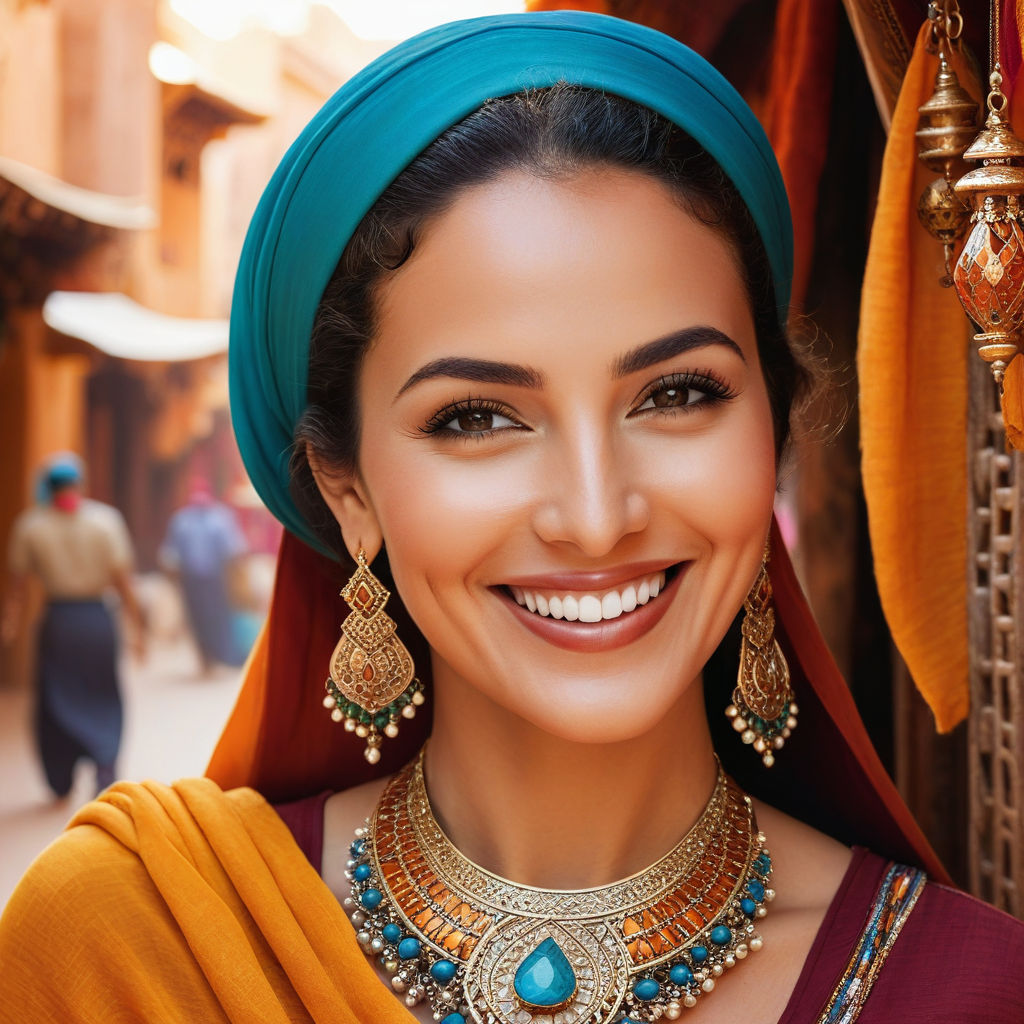

Samira Amrani
The passionate author behind Moroccan Vacations, sharing her expertise and love for Moroccan culture, cuisine, and travel experiences to inspire wanderlust in every reader.
Related Articles
Marrakesh's Hidden Food Gems: Off the Beaten Path Culinary Delights
Traditional Moroccan Street Food Are you ready to embark on a culinary adventure like no other? Get ready to uncover Marrakesh's hidden food gems, where the flavors are bold, the spices are aromatic, and the experience is unforgettable. From savoring traditional...
Moroccan Street Food: A Culinary Adventure in Marrakesh
Exploring the Vibrant Marketplaces Imagine wandering through the bustling streets of Marrakesh, your senses buzzing with excitement. The tantalizing aroma of sizzling spices fills the air, drawing you closer to the vibrant marketplaces. In this culinary adventure,...
Healthy Eating Options in Marrakesh for Yoga Enthusiasts
Traditional Moroccan Dishes Looking for healthy eating options in Marrakesh? You're in luck! With an abundance of traditional Moroccan dishes, fresh salads, vegetarian and vegan-friendly restaurants, and even gluten-free options, Marrakesh has something for every yoga...

